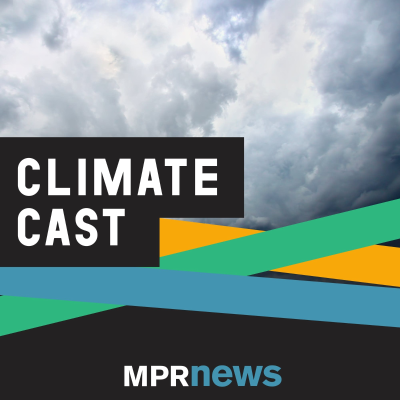
Climate Cast
Englisch
Gratis en Podimo
Kostenlos hören bei Podimo
Starte jetzt und verbinde dich mit deinen Lieblingspodcaster*innen
- Vertraut von über 1 Mio. deutschen Hörer*innen
- Über 1.000 lokale Podcasts und Shows – nur bei Podimo
- Keine Zahlung nötig
Mehr Climate Cast
MPR News meteorologist Paul Huttner with the latest research on our changing climate.
Alle Folgen
406 FolgenAI tool may improve flood forecasting for Mississippi and other rivers
Climate change has amplified the hydrologic cycle in Minnesota. Our more erratic precipitation patterns are driving faster transitions from drought to floods. So, can AI-driven forecasts help predict floods on rivers like the Mississippi? “We need to make innovations in these sorts of models and in our flood forecasting in general,” said Zac McEachran, a research hydrologist from the University of Minnesota. McEachran talked with MPR News meteorologist Paul Huttner about a new flood forecasting model [https://nam02.safelinks.protection.outlook.com/?url=https%3A%2F%2Fagupubs.onlinelibrary.wiley.com%2Fdoi%2F10.1029%2F2024WR039064&data=05%7C02%7Cmalvarez%40mpr.org%7Cd3507064afa84e857a6e08de399990d2%7C8245ecb6b08841218e216c093b6d9d22%7C0%7C0%7C639011528927767207%7CUnknown%7CTWFpbGZsb3d8eyJFbXB0eU1hcGkiOnRydWUsIlYiOiIwLjAuMDAwMCIsIlAiOiJXaW4zMiIsIkFOIjoiTWFpbCIsIldUIjoyfQ%3D%3D%7C0%7C%7C%7C&sdata=UDaUjHkQPJkZnhv73E4cW4dYVCD5ZlXs1cwQa2CD%2F5M%3D&reserved=0] that uses AI to improve local flood predictions. Click play on the audio player above to listen to this episode or subscribe to the Climate Cast podcast.
Climate change is reshaping Minnesota winters
Weather data suggests Minnesota has warmed more than three degrees in the past 150 years, and the state’s winters have warmed more than five degrees since 1970. So how are Minnesotans seeing and feeling these climate changes? “Here in Minnesota, we are experiencing climate change predominantly in the winter,” said Kristoffer Tigue, a reporter for the Minnesota Star Tribune. “We base a lot of our culture around our winters, and so to have our winters being the season that's changing the most, I think it tells a narrative of the direction we’re going as a state.” Tigue explained that the state is experiencing warmer winters, an increase in precipitation and melting. Tigue wrote about the many ways Minnesotans are seeing climate change [https://www.startribune.com/six-ways-minnesotans-are-feeling-the-states-changing-climate/601499538] — from warmer falls, to a lack of foliage color and wildfire smoke. Click play on the audio player above to listen to this episode or subscribe to the Climate Cast podcast.
For Minnesota, warmer winters do not mean the end of snow
Minnesota winters are not what they used to be. The bone-chilling season has warmed more than 5 degrees on average since 1970. Those warmer temps have contributed to another weather phenomenon: more snow — even if it doesn’t seem that way. How do we explain that paradox? Climatologist Kenneth Blumenfeld tracks snowfall trends for the Minnesota State Climate Office. He explained the connection between snowfall rates and higher global temperatures on Climate Cast. Click play on the audio player above to listen to this episode or subscribe to the Climate Cast podcast.
Itasca County looks toward a coal-free economy
Minnesota has a goal to move toward 100 percent carbon-free electricity by 2040. That will have significant impacts on certain parts of the state where coal plays a major part in the economy — like Itasca County. So, how are people in this part of northern Minnesota adapting? Itasca County Commissioner John Johnson spoke about how the county is planning for the transition. Click play on the audio player above to listen to this episode or subscribe to the Climate Cast podcast.
Want healthy trees? Pay attention to microclimates
It was another beautiful fall color season in Minnesota, and we know seasonal temperature change is what drives our fall color show. But did you know those trees can react to more subtle microclimates around the state and even within your yard? Tyler Hesseltine is an arborist who works with trees all year long. He talked to Climate Cast host Paul Huttner about how even small landscaping decisions can have a big impact on tree health. Click play on the audio player above to listen to this episode or subscribe to the Climate Cast podcast.















































![Schöne falsche Welt [ungekürzt]](https://cdn.podimo.com/images/94ef5516-5cad-447c-a77c-763337e12a35_400x400.png)